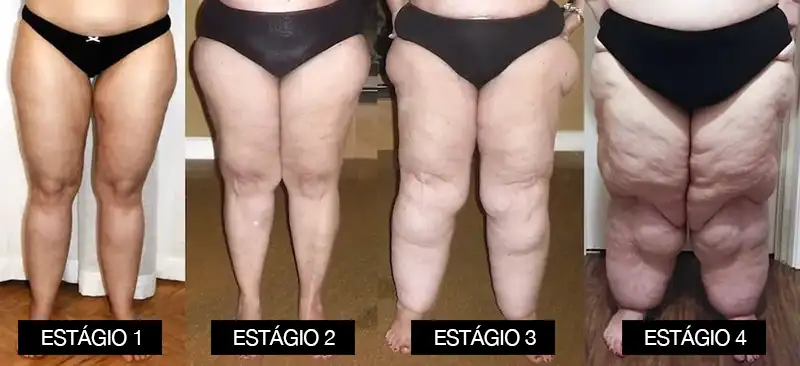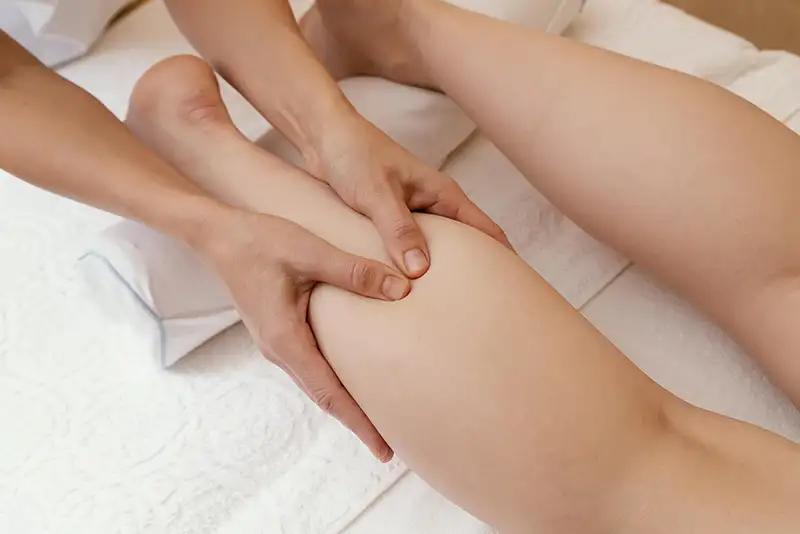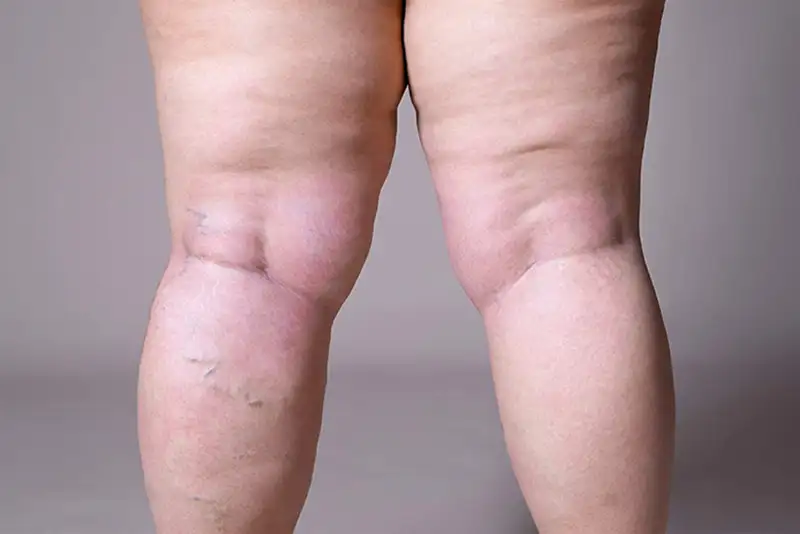Living with pain, fatigue, and swelling in your legs every day can feel confusing and discouraging — especially when no one seems to have answers. If you’ve been told that your symptoms are just “weight gain” or “bad circulation,” but something still doesn’t feel right, you’re not alone. Thousands of women face this exact experience before finally discovering the real diagnosis: Lipedema.
What Is Lipedema?
Lipedema is a progressive condition marked by the abnormal and often painful accumulation of fat in specific areas of the body, primarily the lower half. It most commonly affects the legs, buttocks, hips, and sometimes the arms. One of the hallmark signs is that it does not affect the hands or feet, which helps differentiate it from conditions like lymphedema.
This disorder goes beyond appearance — it’s often painful, physically limiting, and emotionally distressing. What’s more frustrating is that lipedema fat is resistant to diet and exercise, which leads many women to blame themselves for not seeing results with traditional weight-loss methods.
Although the condition affects millions of women globally, it remains underdiagnosed. In many cases, individuals spend years — or even decades — dealing with discomfort and confusion before receiving an accurate diagnosis.
What Causes Lipedema?
Although there is still no definitive answer, research suggests that lipedema has a multifactorial origin, with the following factors playing a key role:
- Lymphatic system dysfunction and chronic inflammation: These factors are still under investigation but may contribute to the progression of the disease.
- Genetic predisposition: It’s common for other women in the same family to exhibit similar symptoms, indicating a hereditary link.
- Hormonal changes: The condition often begins or worsens during hormonal milestones such as puberty, pregnancy, and menopause.
Lipedema Symptoms: What to Look Out For
Knowing how to identify lipedema is the first step toward relief. Below are the most common physical and emotional symptoms associated with the condition:
Main Physical Signs
- Symmetrical fat buildup in the legs (and sometimes arms), but not in the feet or hands
- A heavy, aching, or tight sensation in the legs, especially at the end of the day
- Skin that bruises easily, even with light pressure
- Swelling that worsens with prolonged standing or heat
- Nodules or “rubbery” texture under the skin
- Cold skin to the touch in the affected areas
- Pain on contact or when applying pressure
- Decreased mobility over time
Disproportion and Body Changes
- Noticeable difference between the upper and lower body
- Waist and torso remaining slim while hips and legs enlarge
- Rapid volume increase in the lower limbs during hormonal changes
Emotional and Psychological Impact
- Low self-esteem or shame about body shape
- Anxiety, depression, and social withdrawal
- Frustration with traditional treatments that show no results
- A feeling of isolation from being misunderstood by healthcare professionals and family
These symptoms may worsen over time, particularly without intervention. Early recognition can prevent further progression and complications.
Causes of Lipedema: What Science Knows So Far
The medical community still does not fully understand the cause of lipedema, but current research suggests a multifactorial origin — involving genetics, hormones, and possibly lymphatic system dysfunction.
1. Genetic Component
Many individuals with lipedema report having other women in the family — such as mothers, grandmothers, or sisters — with similar body shapes or symptoms. This pattern strongly suggests a hereditary component, although no specific gene has been identified yet.
2. Hormonal Triggers
Lipedema typically begins or worsens during periods of hormonal shifts, such as:
- Puberty
- Pregnancy
- Perimenopause or menopause
- Use of hormonal contraceptives
These milestones indicate a hormonal imbalance may play a key role in triggering or exacerbating the condition.
3. Inflammatory and Lymphatic Links
Though not present in all cases, lipedema often occurs alongside chronic inflammation or mild lymphatic dysfunction. This contributes to swelling, fluid retention, and tenderness in the affected areas.
Importantly, lipedema is not caused by overeating or inactivity. In fact, many women with lipedema maintain healthy lifestyles and normal body mass index (BMI) in the upper body but still experience unmanageable fat accumulation in the legs.
 Stages of Lipedema: How the Condition Progresses
Stages of Lipedema: How the Condition Progresses

Lipedema tends to follow a gradual, progressive course. Understanding the different stages helps with early detection and choosing the right treatment plan:
Stage 1
- Skin appears smooth, but fat accumulation is visible in the hips and thighs
- A soft or spongy texture under the skin
- Minimal to no swelling
Stage 2
- Skin starts to show irregularities, such as indentations or small nodules
- Fat tissue becomes firmer and more fibrous
- Swelling is more noticeable, especially at night
Stage 3
- Larger fat deposits cause significant disfigurement in the legs and arms
- Skin texture becomes uneven, and folds may develop
- Mobility is affected
Stage 4 (Lipo-Lymphedema)
- In the final stage, lipedema overlaps with lymphedema
- This results in swelling of the feet and hands (which are typically spared in earlier stages)
- Lymphatic damage becomes more apparent, with severe pain and fluid retention
The earlier the condition is diagnosed, the better the chances of slowing or stopping this progression.
 How to Treat Lipedema: Options That Actually Work
How to Treat Lipedema: Options That Actually Work
While there’s no known cure for lipedema, a combination of treatments can dramatically improve symptoms, prevent progression, and restore quality of life. Managing lipedema requires a multidisciplinary approach, and early intervention is key.
Let’s explore the most effective, science-backed strategies:
1. Natural treatment with anti-inflammatory nutrition and supplementation

A growing number of specialists recommend a nutritional approach focused on reducing systemic inflammation. This does not involve calorie restriction or extreme diets — instead, the focus is on eating in a way that supports the body’s natural healing processes.
Suggested dietary habits:
- Prioritize whole foods, especially vegetables, leafy greens, fruits, lean proteins, and healthy fats
- Minimize or eliminate ultra-processed foods, refined sugars, white flour, and artificial additives
- Avoid foods that increase fluid retention, such as excess sodium and alcohol
- Consider reducing or eliminating gluten and dairy, especially in women with suspected sensitivities
- Include foods that support lymphatic flow, such as ginger, turmeric, lemon, berries, and omega-3-rich oils
This way of eating not only reduces inflammation but also helps manage weight, support hormonal balance, and improve overall well-being.
2. Natural Supplements for Lipedema (when medically approved)
While no supplement alone will resolve lipedema, some compounds have shown promising results in reducing inflammation, supporting circulation, and aiding lymphatic function.
Common natural options include:
- Diosmin and Hesperidin: flavonoids that support venous health
- Gotu kola (Centella asiatica): known to improve microcirculation
- Horse chestnut extract: can reduce swelling and heaviness
- Omega-3 supplements: help combat systemic inflammation
- Vitamin D: often low in women with lipedema and essential for immune regulation
Always consult with a healthcare provider before beginning any supplement routine to avoid interactions or complications.
3. Manual Lymphatic Drainage (MLD)

MLD is a gentle massage technique that encourages the flow of lymphatic fluid, helping to reduce swelling, discomfort, and tissue tension. It is especially effective when combined with compression therapy.
Performed by a certified lymphatic therapist, MLD can:
- Relieve the feeling of heaviness in the legs
- Stimulate drainage and detoxification
- Improve overall circulation and skin texture
4. Compression Therapy
Compression garments, such as stockings, leggings, or arm sleeves, are crucial in managing lipedema. These specially designed items apply consistent pressure to improve lymphatic flow and prevent fluid buildup.
Compression therapy helps:
- Reduce inflammation and swelling throughout the day
- Alleviate pain and fatigue during long periods of standing
- Slow down disease progression by mechanically supporting the tissue
It’s important to get professionally fitted garments for optimal comfort and effectiveness.
5. Physical Exercise and Movement Therapy

Many women with lipedema fear exercise due to pain or limited mobility. However, certain types of movement are not only safe but highly beneficial.
Ideal exercises include:
- Water-based workouts like aqua aerobics or swimming
- Low-impact cardio such as walking, cycling, or rebounder (mini-trampoline) routines
- Gentle stretching and yoga for flexibility
- Strength training with light resistance to support muscle tone and circulation
The goal is not weight loss but rather preserving mobility, reducing stiffness, and improving body awareness.
6. Liposuction (Specialized for Lipedema)
In more advanced cases, lipedema-specific liposuction may be considered. Unlike traditional liposuction, this procedure is designed to safely remove diseased fat tissue without damaging the lymphatic vessels.
This procedure must be performed by experienced surgeons trained in treating lipedema, using techniques such as:
- Tumescent liposuction
- Water-assisted liposuction (WAL)
Potential benefits:
- Significant pain reduction
- Improved mobility
- Better body symmetry
- Lower risk of progression in the treated areas
Surgery is typically considered after conservative treatments have been tried and when the patient’s quality of life is severely affected.
 Hormones and Lipedema: What Every Woman Should Know
Hormones and Lipedema: What Every Woman Should Know
Lipedema is deeply tied to female hormonal cycles, which helps explain why the condition is almost exclusive to women.
Here’s how different life stages can affect symptom severity:
Puberty
Many women report their first symptoms appearing during adolescence. Hormonal surges seem to activate the fat-storing mechanisms linked to lipedema.
Pregnancy
Symptoms may worsen during or after pregnancy due to increased hormonal load and fluid retention. Some women experience rapid changes in body shape during this period.
Menopause
The drop in estrogen levels during menopause can lead to increased fat accumulation and worsening of pain or swelling. It’s a crucial moment to revisit treatment protocols.
Oral Contraceptives and Hormone Therapy
Some women report flare-ups after starting hormonal birth control. While not proven to be a direct cause, these medications may influence fat distribution or water retention in sensitive individuals.
Understanding these connections can help women make more informed decisions about treatment timing, prevention, and hormonal care.
 Emotional Health and Lipedema: The Invisible Weight
Emotional Health and Lipedema: The Invisible Weight
Lipedema doesn’t only affect the body — it deeply impacts mental health and self-perception. Dealing with chronic pain, body changes, and repeated dismissal by doctors takes a toll.
Common emotional challenges:
- Social isolation due to embarrassment or lack of mobility
- Body image struggles and self-esteem issues
- Frustration from being misunderstood or labeled as lazy or undisciplined
- Anxiety and depression
Women with lipedema deserve compassionate care and a support system that sees their condition for what it really is: a medical issue, not a lifestyle choice.
Therapy, support groups, body-positive communities, and consistent self-education are powerful tools in managing the emotional side of the disease.
 Living Well with Lipedema: It Starts with Awareness
Living Well with Lipedema: It Starts with Awareness
Lipedema is more than a cosmetic issue — it’s a complex medical condition that requires proper diagnosis, individualized care, and continuous support. With the right approach, women can take back control of their health, mobility, and confidence.
If you suspect you might have lipedema:
- Don’t ignore your symptoms
- Seek a specialist familiar with the condition
- Start tracking your symptoms, photos, and patterns
- Be your own advocate — the earlier the diagnosis, the better the outcome
You are not alone. Millions of women around the world live with lipedema, and more resources, communities, and treatment options are becoming available every day.



Um comentário
Hi, this is a comment.
To get started with moderating, editing, and deleting comments, please visit the Comments screen in the dashboard.
Commenter avatars come from Gravatar.